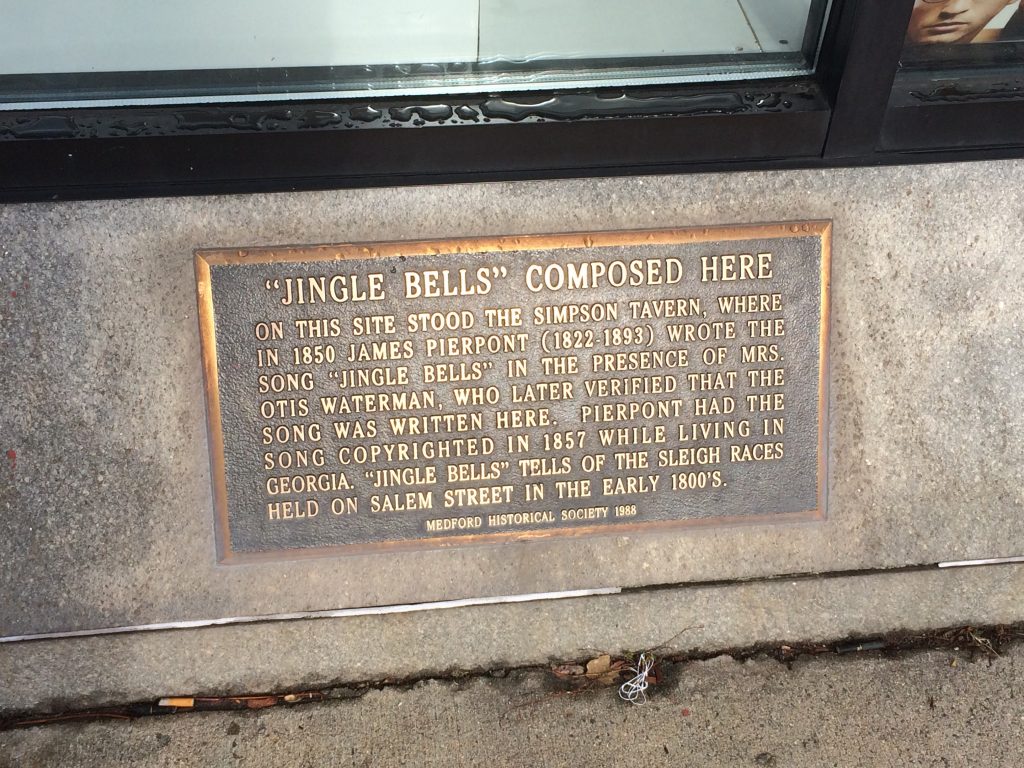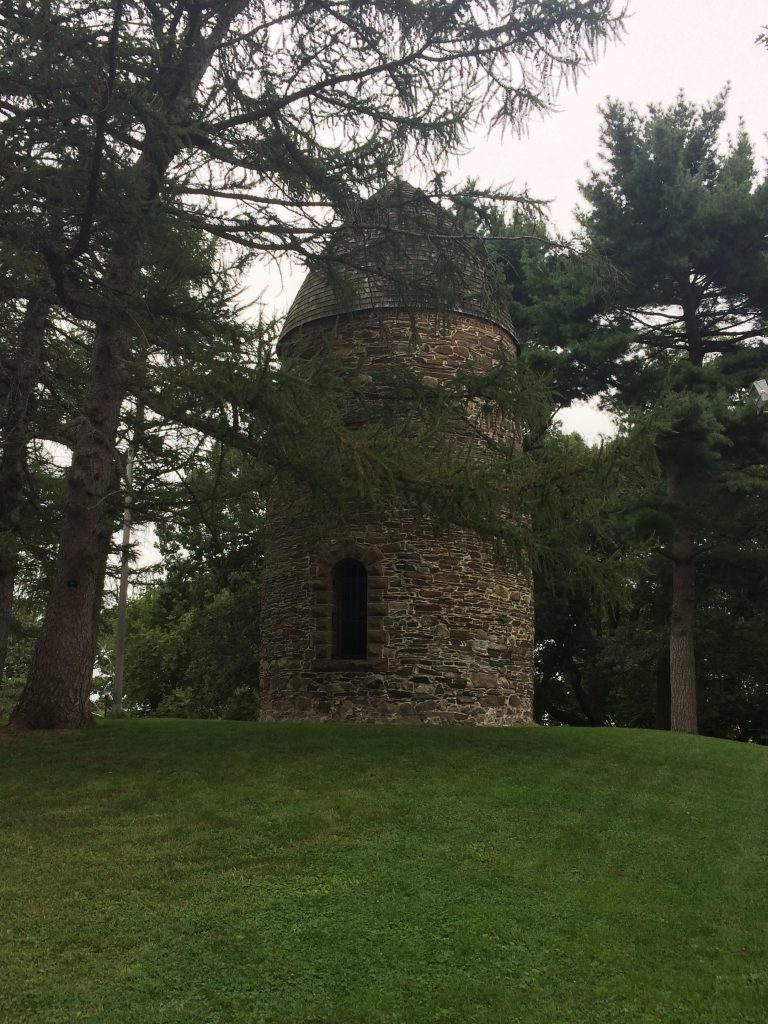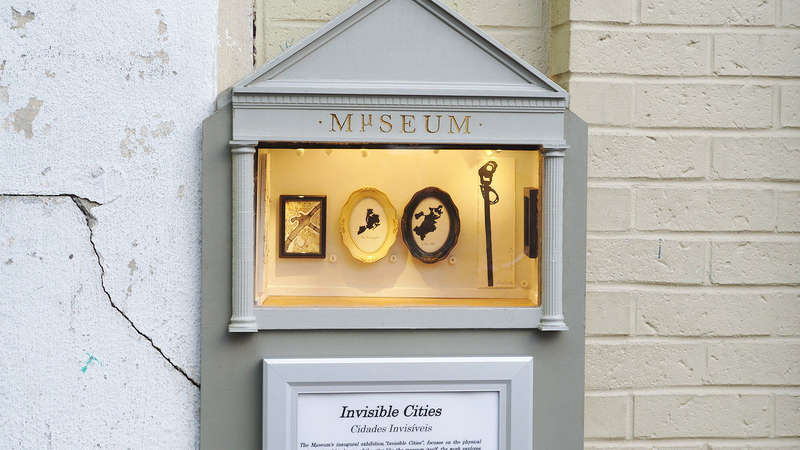Written by Ruaidhri Crofton, History and Museum Studies M.A. student
Most Tufts students will likely know of the Boston Tea Party, Paul Revere’s Ride, and the Battle of Bunker Hill, just a few of the many significant historic events that have taken place in and around Boston throughout the city’s nearly 400-year history. However, many are surprised to find out just how many cool and quirky historic claims to fame can be found in their own backyard. Though Boston may often overshadow its smaller Medford and Somerville neighbors, these two cities are themselves home to a number of interesting historic sites. With many within walking distance or a short bus ride of the Tufts campus, a visit to any of these sites is not only a great way to get to know your new community, but a fun opportunity to do some exercise in the process!
Please note that given the ongoing COVID-19 public health emergency in Massachusetts and around the world, I would strongly advise against planning a visit to any of these sites until the situation improves.
Jingle All the Way…to Medford Square! (Medford)
Inspired by popular sleigh races that used to take place on Salem Street in Medford in the early 1800s, James Pierpont is said to have penned the now iconic Christmas song “Jingle Bells” at Simpson’s Tavern in Medford Square in 1850. This seasonal claim to fame is rather dubious as the city of Savannah, Georgia, where the song was copyrighted in 1857, also claims to be the where the song was first composed. However, a small plaque now marks the site of Simpson’s Tavern as the site of the song’s birthplace and is sure to bring some holiday joy to Tufts students looking to take a short stroll from campus to see it.

Walking Distance from Tufts: 0.7 miles, 14 minutes
Just Call Me #1! (Somerville)
Charles Williams, Jr. arguably had the easiest phone number in the world to remember: 1. In April 1877, the Williams family home at 1 Arlington Street in Somerville became the site of the first permanent residential telephone line in the world. The owner of a telegraph manufacturing facility in Boston, Alexander Graham Bell and Thomas Watson experimented with the telephone in Williams’ shop and eventually installed a phone line connecting his house in Somerville to his office in Boston. What was the first conversation held over this line? A brief message from Williams to his wife after work: “Caroline, I’m coming home!”
Walking Distance from Tufts: 2.4 miles, 49 minutes
“To Grandfather’s House We Go!” (Medford)
In yet another claim to lyrical fame, Medford is also home to the Paul Curtis House, said to be the “Grandfather’s House” in Lydia Maria Child’s beloved poem “Over the River and through the Wood” written in 1844. Originally published as “The New-England Boy’s Song about Thanksgiving Day”, the work recounts the author’s childhood memories of visiting her Grandfather’s house during Thanksgiving. An unknown composer eventually set the poem to the tune that remains popular today.
Walking Distance from Tufts: 0.7 miles, 14 minutes
Powder House to Pickle Factory (Somerville)

First built as a windmill c. 1704, the Old Powder House in Somerville was eventually converted into a gunpowder magazine in 1747 by the colonial government of Massachusetts. In the lead up to the American Revolution, Governor Thomas Gage ordered the removal of military stores from arsenals like the Old Powder House in an attempt to prevent the outbreak of war amongst colonists. On September 1, 1774, a force of approximately 260 British Regulars removed all of the gunpowder held in the Old Powder House before returning to Boston. This led to panic amongst colonists throughout the countryside amid rumors that bloodshed had occurred, resulting in thousands of militiamen mobilizing and streaming toward Boston in response. Since then, the property surrounding the Old Powder House has been used as a farm by the Tufts family, a carriageway, and even a pickle factory. Today, the Old Powder House stands in Nathan Tufts Park near several restaurants popular amongst Tufts students and next to another eccentric landmark: the “Museum of Modern Renaissance”.
Walking Distance from Tufts: 0.5 miles, 10 minutes
The Royall House and Slave Quarters (Medford)
The Royall House and Slave Quarters preserves the 18th century home of the Royall family, the largest slaveholding family in Massachusetts, along with the only remaining slave quarters in the northern United States. Visitors are welcome to visit the site from mid-March to mid-November where they can take a guided tour of both the mansion and slave quarters to learn more about the property’s role in the history of race, class, and slavery in North America. Though the stories preserved and interpreted by the site can be troubling to hear, a visit to the museum provides an impactful means of learning about this country’s past and its significance today. Admission is typically only $10, but Tufts students are able to visit for free.
Walking Distance from Tufts: 0.2 miles, 5 minutes
Fluff (Somerville)
Although not exactly a historic landmark you can visit, Somerville is the birthplace of perhaps one of the most famous guilty pleasures in the Northeast: marshmallow fluff! In 1917, Somerville confectioner Albert Query began marketing the sweet, sticky concoction door-to-door before selling his recipe to candy makers H. Allen Durkee and Fred L. Mower in 1920. Today, the Durkee-Mower factory in nearby Lynn, Massachusetts continues to produce marshmallow fluff to be enjoyed on its own or as a key ingredient in a New England take on the peanut butter sandwich: the fluffernutter. Every September, Somerville hosts the annual “What the Fluff?” festival in Union Square to celebrate the local invention. While you’re there, be sure to check out The Mμseum – perhaps the smallest art museum in the world!

Walking Distance from Tufts: 2.4 miles, 50 minutes
Amelia Earhart’s House (Medford)
Before she became the first female aviator to fly solo across the Atlantic Ocean in 1932, Amelia Earhart worked as a teacher and social worker at a Boston settlement house during the 1920s. During the week, Earhart worked to teach classes and hosted programs for new immigrants and their children at Denison House. During her time off on weekends, she gained experience doing what she is now most famous for: flying. Originally from Kansas, from 1925 to 1928 Earhart made her home in Medford with her mother and sister in a small house on Brooks Street. A small plaque in her honor can be found outside the private home today.
Walking Distance from Tufts: 1.5 miles, 31 minutes
